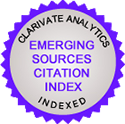Quality of life and urban mobility. An approach to the influence of public transport in the city of Neuquén
Abstract
The concept of quality of life allows us to address socio-spatial differentiation not only from material aspects but also from the subjectivities and opportunities of citizens to achieve optimal levels of satisfaction in urban life. One of the dimensions that has not been extensively studied in the construction of quality of life indices is urban mobility, specifically public transport. Although there are works that assure the positive influence of public transport on citizens, there are no direct links with the quality of life in northern Patagonia. In relation to the above, the objective of this work is to determine whether there are deficiencies in spatial accessibility to public transport, in order to establish some relationships with the distribution of quality of life in the city of Neuquén. For this, population data and an index prepared at the census radius level were used. In addition, the routes and stops of public transport were analyzed using various GIS methodologies. The results show that areas historically disadvantaged in terms of quality of life have significant deficiencies in spatial accessibility to public transport.Downloads
Copyright (c) 2025 Germán Perez

This work is licensed under a Creative Commons Attribution 4.0 International License.

1.jpg)

3.png)























